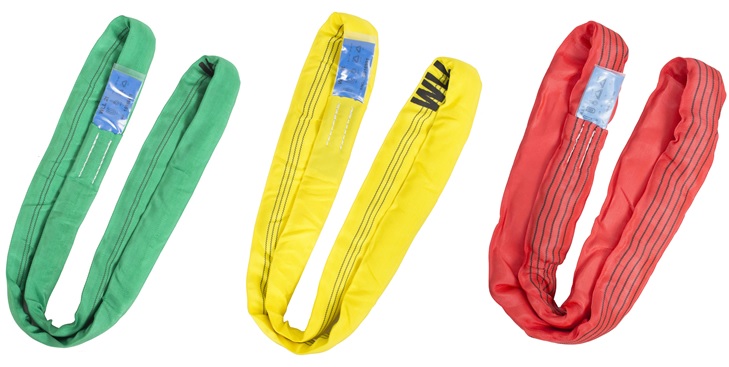
At SafetyLiftinGear.com, we like to think we know a thing or two about lifting gear safety. If we didn’t, we may need to consider a company name change!
As such, it’s only fair that we pass some of that knowledge on to you and today we’re doing just that on the subject of lifting slings.
So, gather round the SLG learning tree as we shine some light on the rainbow-coloured world of colour-coded lifting slings.
Lifting Sling Colours
When it comes to lifting equipment, certain products are notably distinguishable from the next; e.g. no-one is going to confuse a pallet truck and a forklift any time soon.
However, when it comes to lifting slings, it can be inherently difficult to differentiate one product from another, particularly when it comes to weight capacity.
Luckily, some bright spark created the handy lifting sling colour code along the way, quite literally changing the complexion of the lifting sling world as a result.
Lifting Sling Colour Code
Whether you opt for the web or round version of the lifting sling, these handy hoists typically come in a variety of colours.
This isn’t simply a vibrant design choice: the colour coding system is a universally recognised method of determining how much weight a sling can handle – so it’s important to get well acquainted.
The typical lifting sling colour code is as follows:
Purple Lifting Slings
Capable of lifting up to one tonne of weight max.
Green Lifting Slings
Capable of lifting up to two tonnes of weight max.
Yellow Lifting Slings
Capable of lifting up to three tonnes of weight max.
Grey Lifting Slings
Capable of lifting up to four tonnes of weight max.
Red Lifting Slings
Capable of lifting up to five tonnes of weight max.
Brown Lifting Slings
Capable of lifting up to six tonnes of weight max.
Blue Lifting Slings
Capable of lifting up to eight tonnes of weight max.
Orange Lifting Slings
Capable of lifting between 10 tonnes and 20 tonnes, depending on the chosen strength.
While these colour/weight categories are generally regarded as an industry standard across the board, there may be slight variations between suppliers and manufacturers.
As such, always be sure to double-check the colour corresponds with the correct weight you need prior to use.
This information should be readily available in the product description, instruction manual or manufacturer guidelines, if not on the sling itself.
Why have a lifting sling colour code?
The primary reason for specific lifting sling colours is, of course, safety. Categorising lifting slings into visible divisions is as clear as it gets when it comes to highlighting their identity and lifting capabilities. Some even have the weight limit printed on the sling itself for added clarity.
In addition to the practical side of it, colour coded lifting slings are also a legal requirement, falling under the Lifting Operations and Lifting Equipment Regulations 1998 (LOLER) when it comes to laws and regulations. LOLER requires all lifting equipment to be fit for purpose, appropriate for the task and suitably marked, while they may also be subject to a thorough examination.
While LOLER rules don’t specifically state that lifting sling colours are a necessity, it’s become an accepted identifier within the industry that adheres to LOLER guidelines and, most importantly, is effective.
So, there you have it – everything you need to know about colour coded lifting slings! If you do have any additional queries, drop us a line using the button below.
Get in Touch Now

